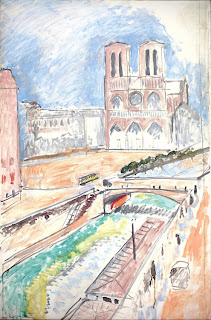I am taking a class at the Art League in Alexandria,
Virginia with instructor Robert Liberace. Liberace is an accomplished painter,
sculptor and draughtsman. The class, “Figure and Portrait: A Modern Approach to
Classical Drawing”, explores drawing the figure through master techniques, such as silverpoint, pen and ink, charcoal, red chalk and
graphite. I hope to post on these
various techniques in the coming weeks.
Robert Liberace, Figure Study in pen and ink, 2012.
The past two weeks we have been using pen and ink with
watercolor washes to create a three dimensional drawing of the figure. Pen and ink, using flexible nibs, allows the
artist to create energetic, dynamic sketches. Rembrandt’s pen and ink drawings,
characterized by his calligraphic line, are great examples of this technique.
Rembrandt van Rijn Woman Having Her Hair Combed, pen and ink, 1637
Pen and ink can also be used for longer more detailed
studies. It was a favored medium of
Michelangelo, Leonardo, Durer and many other masters. Liberace recommends using
a slightly textured text weight paper such as Twinrocker in “Calligraphy
Cream”. To add warmth to the paper he
coats it with a light watercolor wash using yellow ochre or raw sienna. Since
pen and ink is an unforgiving medium (erasing is difficult if not impossible)
most artists begin with a simple pencil sketch of their subject.
Michelangelo Buonarroti, Studies of the Holy Family, pen and ink, 1505.
When ready to start drawing Liberace recommends using a
sepia ink, such as seen in master drawings, with flexible nibs. The nibs allow the artist to
create lines that go from thick to line as pressure is put on the nib. Rob also uses Micron technical pens as he draws. Technical pens (which store their ink in the
pen) allow for a more consistent line.
I highly recommend experimenting with his wonderful medium!




















